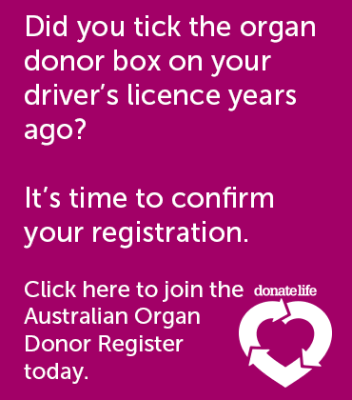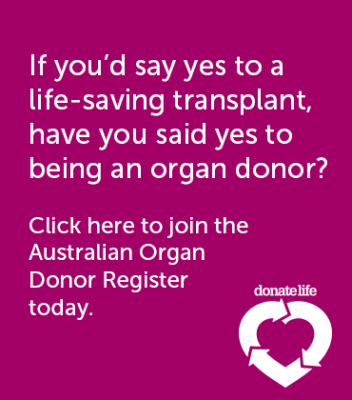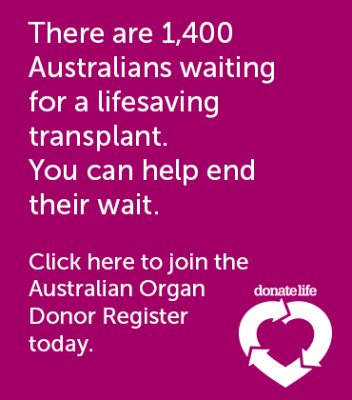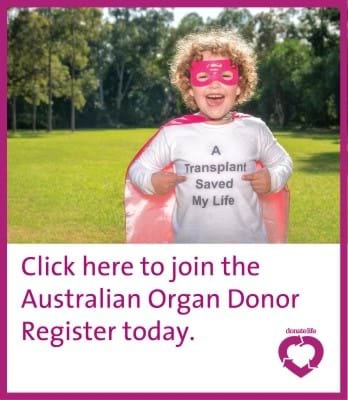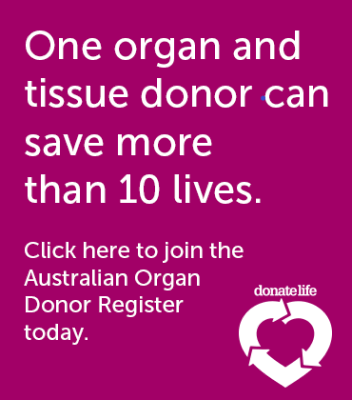The behavioural challenge
In Victoria, families need to consent to organ donation. Nine out of 10 families will consent to organ donation if a person has registered their intent to donate. But while 69% of Australians say they would donate their organs, only 33% of the adult population has registered. This is an example of the intention-action gap.
Behavioural insights concept: The intention-action gap refers to the difference between what people say they want to do, and what they actually do. It occurs in many facets of our lives. From bringing a reusable cup to the coffee shop, to doing more exercise, or deciding not to eat the entire chocolate bar in one go. Often there is something in our surroundings, or a feature of the choice itself, that prevents our best intentions occurring.
Policies frequently have unintended consequences, or simply don’t work. Rigorous evaluation techniques, such as randomised controlled trials, help policy makers understand whether a policy is working, and for whom. In instances where a randomised controlled trial is not possible, we can still gather useful evidence to test the effectiveness of policies.
What we did
We tested five behaviourally informed messages against a control message via banner ads on the VicRoads ‘renew your licence’ website (to harness the historic association between registering to be an organ donor and applying for a driver’s licence). Two messages were tested at a time, with a “winner stays on” approach. Visitors to the site were randomly assigned to either the control group or a message we were testing.
Whichever message ‘won’ by producing the most registrations was then tested against another message. Although ideally we would have tested all the messages at the same time, the data gathered provided evidence for the messages we might trial in the future.
Messages that we tested
Priming
Priming occurs when a message presents information or stimulus that has associations with another stimulus, and goes on to trigger particular responses or behaviours.
Message used: “Did you tick the organ donor box on your driver’s licence years ago? It’s time to confirm your registration.”
Reciprocity
People have a tendency to match or exceed how they have been treated.
Message used: “If you’d say yes to a life-saving transplant, have you said yes to being an organ donor?”
Attention, scarcity and personal relevance
This message emphasised the limited resources and connected to what the person can do about it.
Message used: “There are 1,400 Australians waiting for a lifesaving transplant. You can help end their wait.”
Images
Images can be emotive and create a more powerful message.
Gain frame
A gain frame is when a message is focussed on the positive outcome, compared to a loss frame which focuses on costs or loss. People tend to avoid risk when they focus on what they could lose out on.
Message used: “One organ and tissue donor can save more than 10 lives.”
What we found
We found that the gain frame was the ‘winning’ message. However, because there was a low click-through rate across all messages (including the control message), we hypothesise that visitors to the site were focussed on achieving their goal of renewing their licence and did not want to be diverted to another task via a banner ad - a nice example of people following through on their intentions!
Key statistics
- 496,503 total views
- 946 click-throughs
- 127 registrations
- One organ donor can save up to seven lives
What's next?
We trialled new messages on another government website. This trial used a landing page approach after the original purpose for visiting a site was completed. Initial results for this new trial suggested that a landing page is an effective way to get people to click-through and successfully register. Our initial results are promising. The ratio of those registering for organ donation after clicking through has increased by 43% in our new trial.
Thanks
We thank our partners the Department of Health and Human Services, DonateLife Victoria, and VicRoads, and the Behavioural Insights Team (UK) who advised on trial design.
Updated
